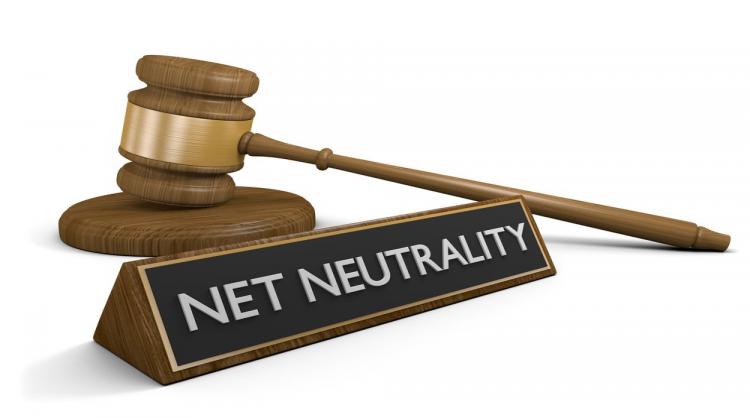Net Neutrality Oral Argument Brings Anxiety to Internet Service Providers
December 11, 2015 | by Andrew Regitsky

After months of anticipation, the FCC’s Open Internet Order finally had its day in court on December 4th, when a three judge panel at the DC Circuit Court of Appeals spent four hours grilling lawyers for both the FCC and Internet service providers (ISPs). The three judges included Sri Srinivasan, an Obama appointee, Stephen Williams, a Reagan appointee and most importantly, David Tatel, a Clinton appointee who wrote the opinions overturning the FCC’s two previous net neutrality orders, and is expected to write this decision. Most industry observers believe that judge Srinivasan will support the Commission’s position, while judge Williams, who is seen as anti-regulation, will support the ISPs. Thus, how judge Tatel rules, should decide the case.
The Court’s “oral argument” covered the Commission’s decision in February to reclassify broadband Internet access service as a telecommunications service and thereby subject ISPs to Title II requirements such as ensuring their rates are just and reasonable and are not unlawfully discriminatory. The Order also classified mobile broadband service as a Title II telecommunications service and for the first time, asserted the Commission’s authority over interconnection agreements between ISPs and edge (content) providers. Finally, the Order also stated that the Commission has the authority to review all future ISP Internet proposals or changes. Opponents of the Order claim that the Commission granted itself all this sweeping authority without the proper notification required by the Administrative Procedures Act (APA).
After the oral argument, ISPs spoke bravely. They noted that the judges were critical of the mobile broadband reclassification and seemed critical of the Commission’s decision to intervene on the traffic exchange agreements between ISPs and edge providers. ISPs highlighted the court’s concern that the Commission never gave the industry proper notice before deciding to go the reclassification route. However, all the brave talk could not hide the fact that two of the three judges, including judge Tatel, seemed to accept the FCC’s rationale for reclassification.
Early in the argument, judge Tatel suggested the starting point to evaluate the legality of the reclassification should be the prior Supreme Court case known as “Brand X” that found the FCC had discretion to choose the classification of Internet service.
The Brand X case originated in 2002 when the Commission found that cable modem service was an information service covered by Title I of the Telecommunications Act and not a telecommunications service covered by Title II or a cable service covered by Title VI.
This decision was appealed to the Supreme Court by an ISP called Brand X. Brand X argued that cable Internet service actually comprises a bundle of two services: an information service not subject to the Commission’s telecommunications regulation and a telecommunications service subject to mandatory Title II regulation. Brand X made this argument because if Title II applied to Internet cable, then cable companies would have to unbundle the components of their Internet services, thus allowing Brand X and other ISPs to use the telecommunications components of those bundles to offer competing Internet service over cable company wires.
The Supreme Court rejected Brand X’s appeal. In its decision, it acknowledged that cable Internet service does contain a telecommunications component. However, it noted that the law was vague and, therefore, deferred to the Commission’s determination that this component is functionally integrated into a single information service offering. Thus, according to this theory, if the Court deferred to the FCC in Brand X, why should it not also have the authority to act in the current case?
If the Court does use the Brand X case as a guideline to the Open Internet Order, ISPs are in big trouble. That is because once the Court accepts reclassification of broadband Internet access service as a telecommunications service, even if the Court rejects all the other FCC arguments, the Commission will have another opportunity to defend its other actions with new legal justifications.
For example, if the Court accepts reclassification, but finds that the Commission did not give proper notice under the APA, the Commission can simply issue a Further Notice of Proposed Rulemaking listing its arguments for reclassification. After industry comments are filed, the Commission can reach its predestined position.
Similarly, if the Court rejects the decision to reclassify mobile broadband service, the Commission can use a different rationale to win the Court’s approval. In other words, once reclassification is accepted, all the other issues will fall like dominoes with little ISPs can do.
Of course, there is one action ISPs can and almost surely will take if they lose at the DC Circuit. That is to appeal the decision to the Supreme Court. In fact, whichever side lose is sure to appeal, leading to more years of uncertainty. That is why we keep preaching here for Congress to take action, but that seems like a bridge to far to cross for the current Congress.
By Andy Regitsky, CCMI

